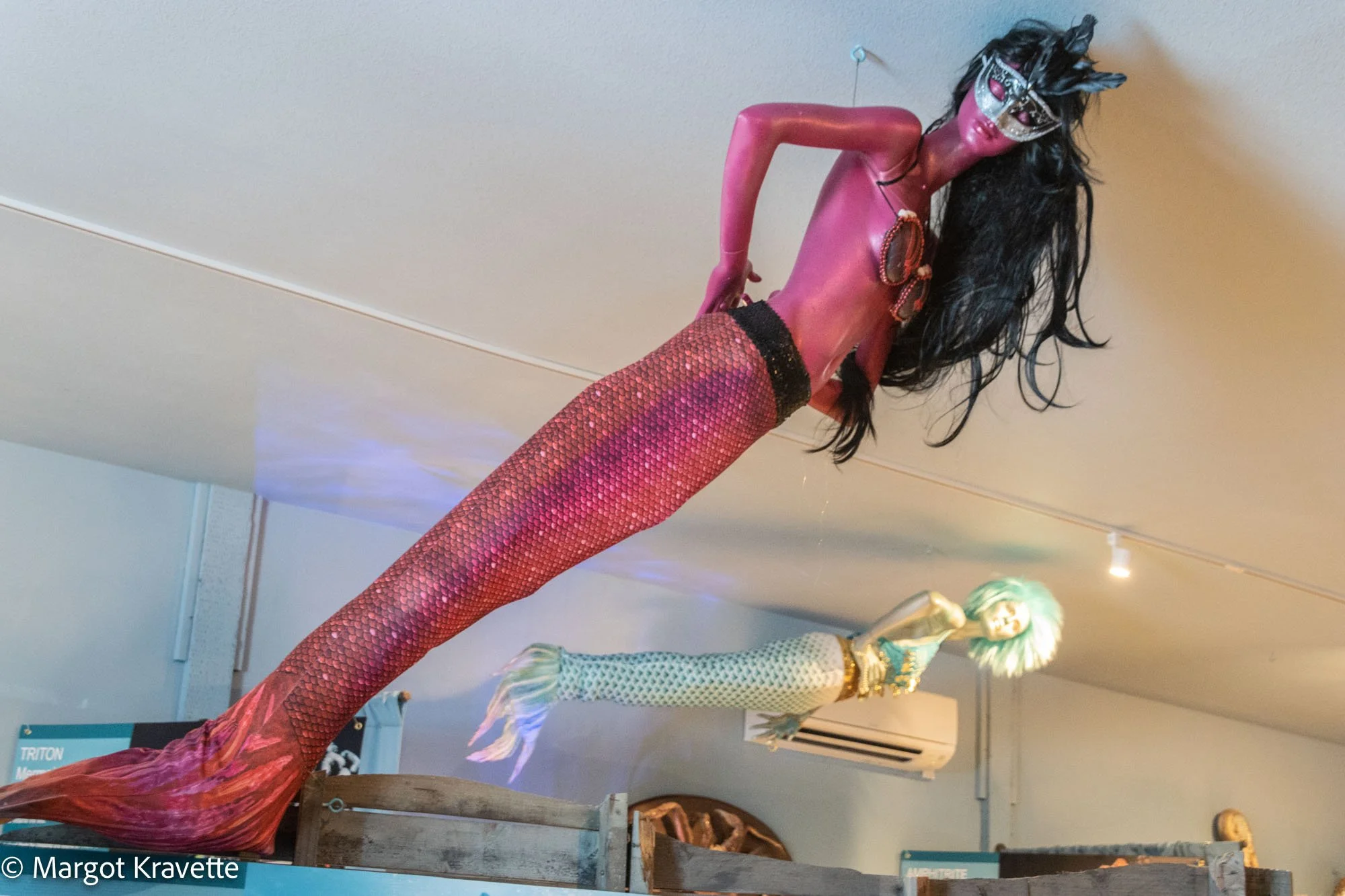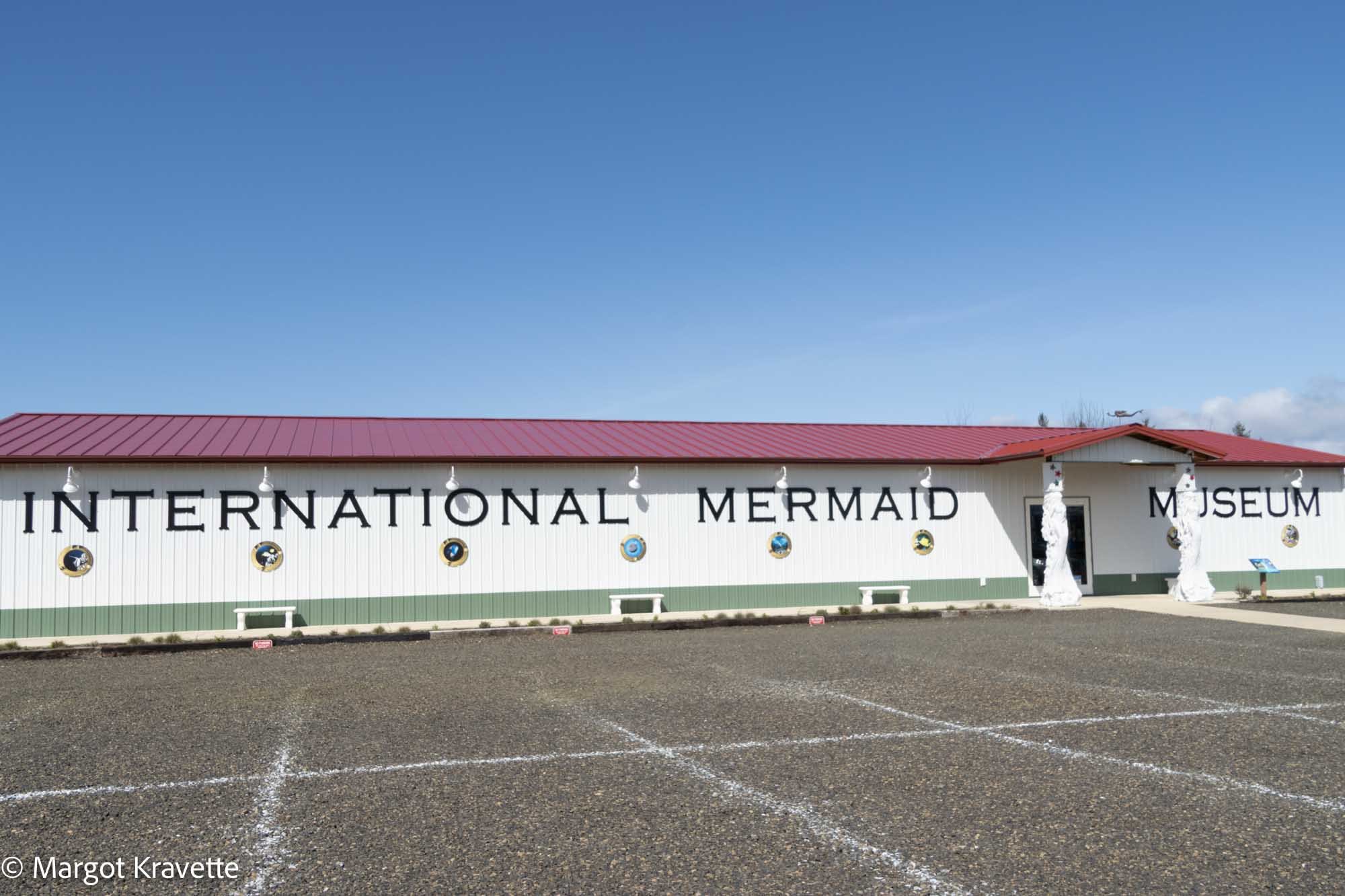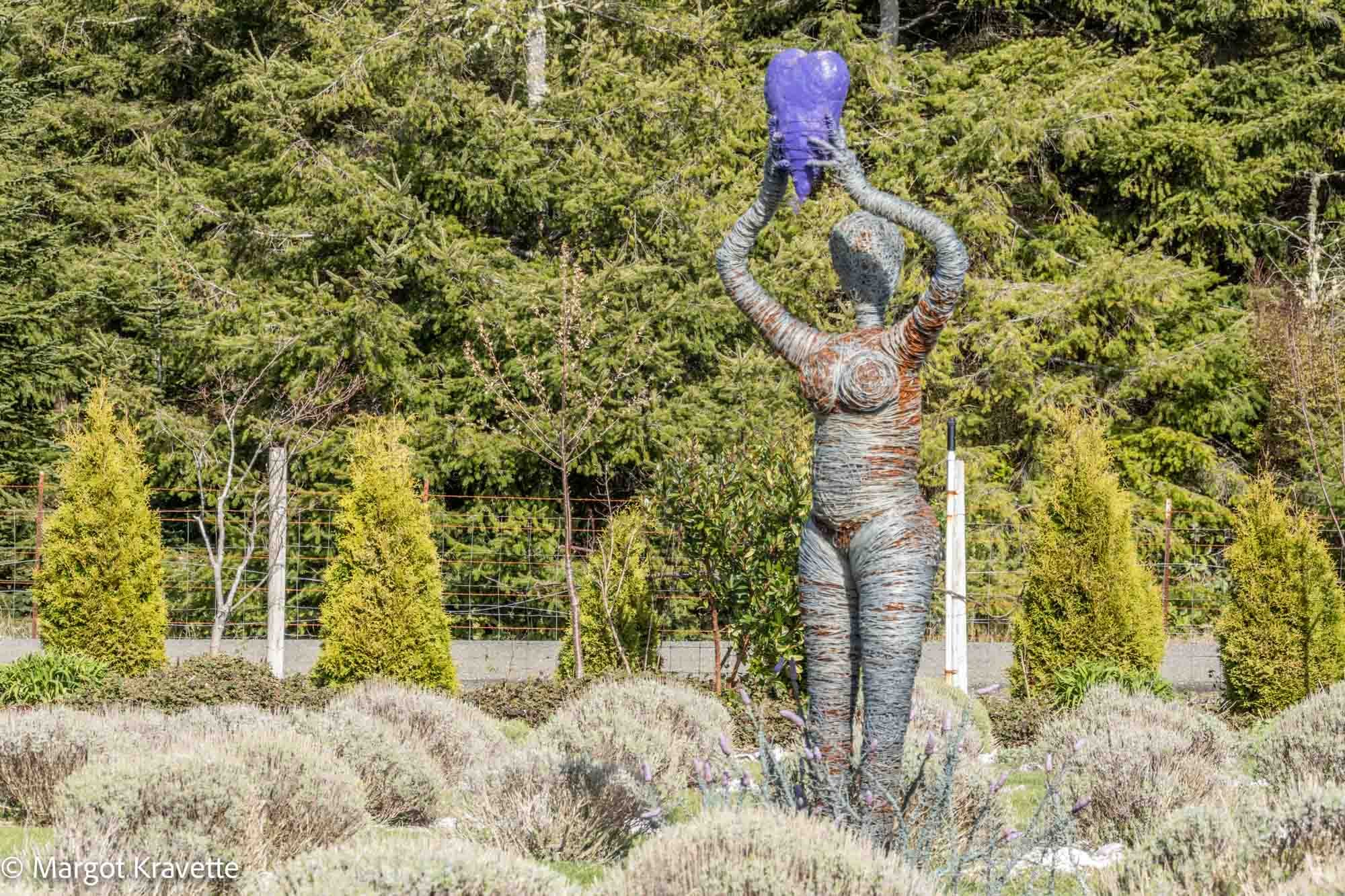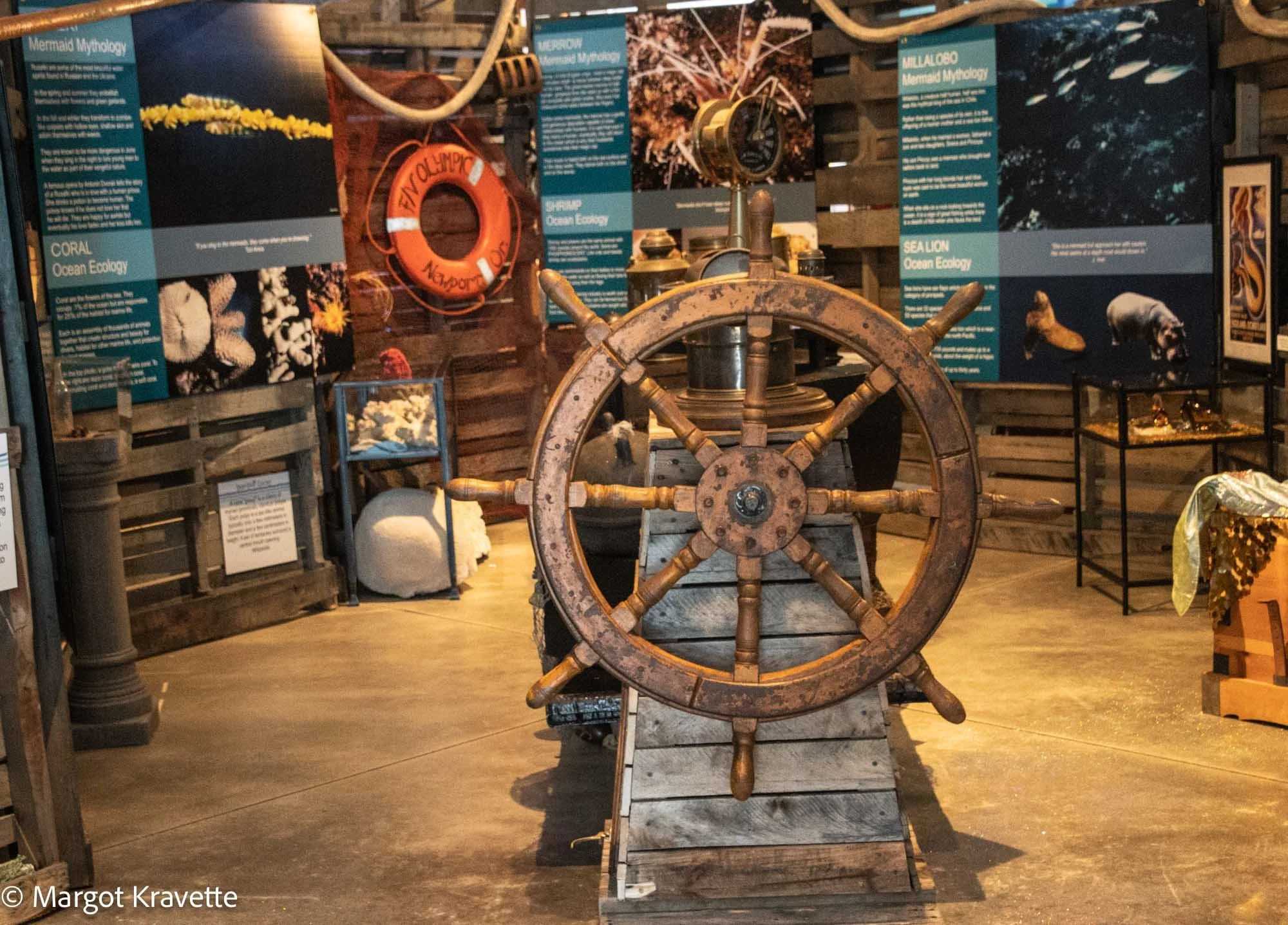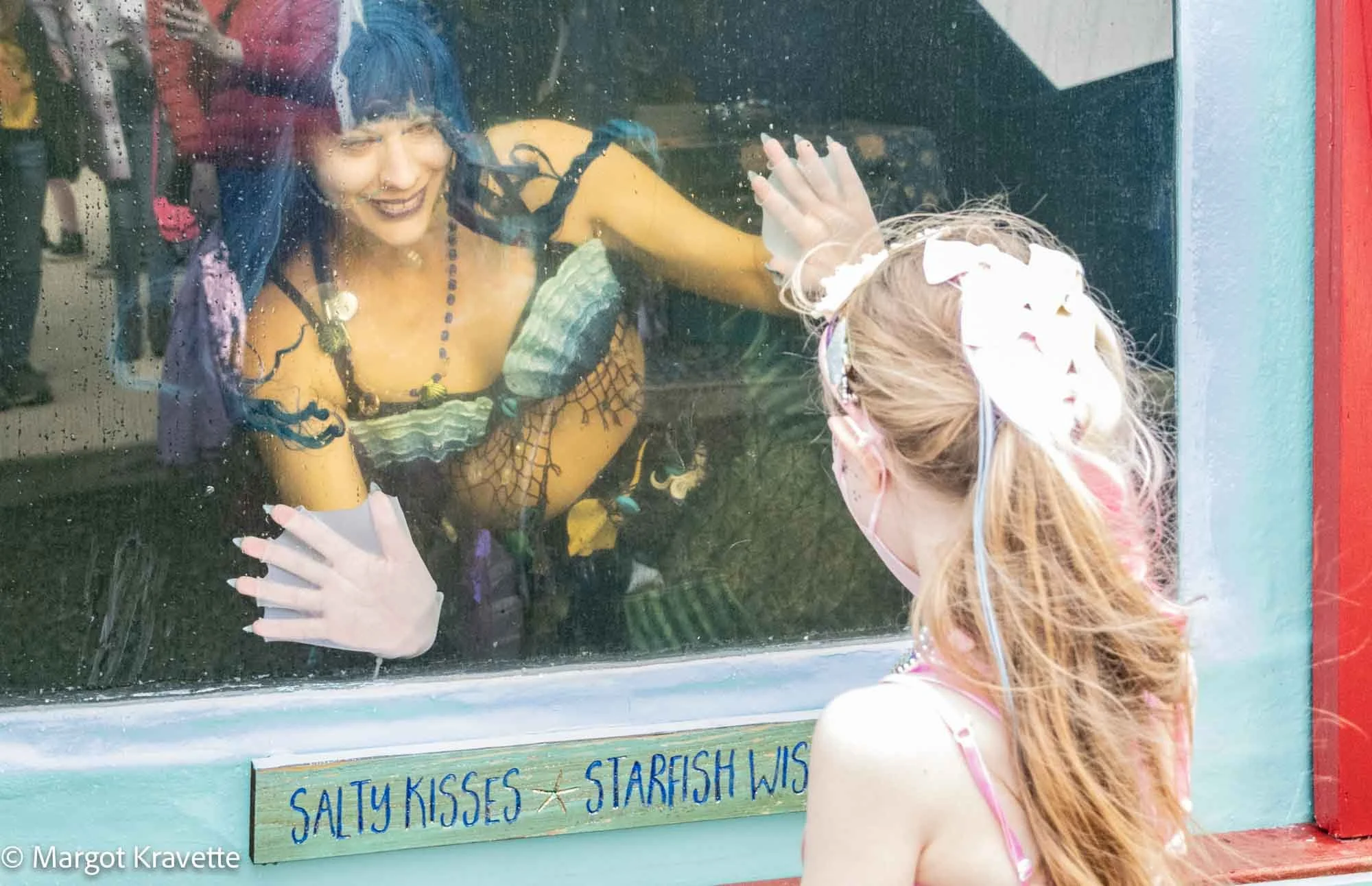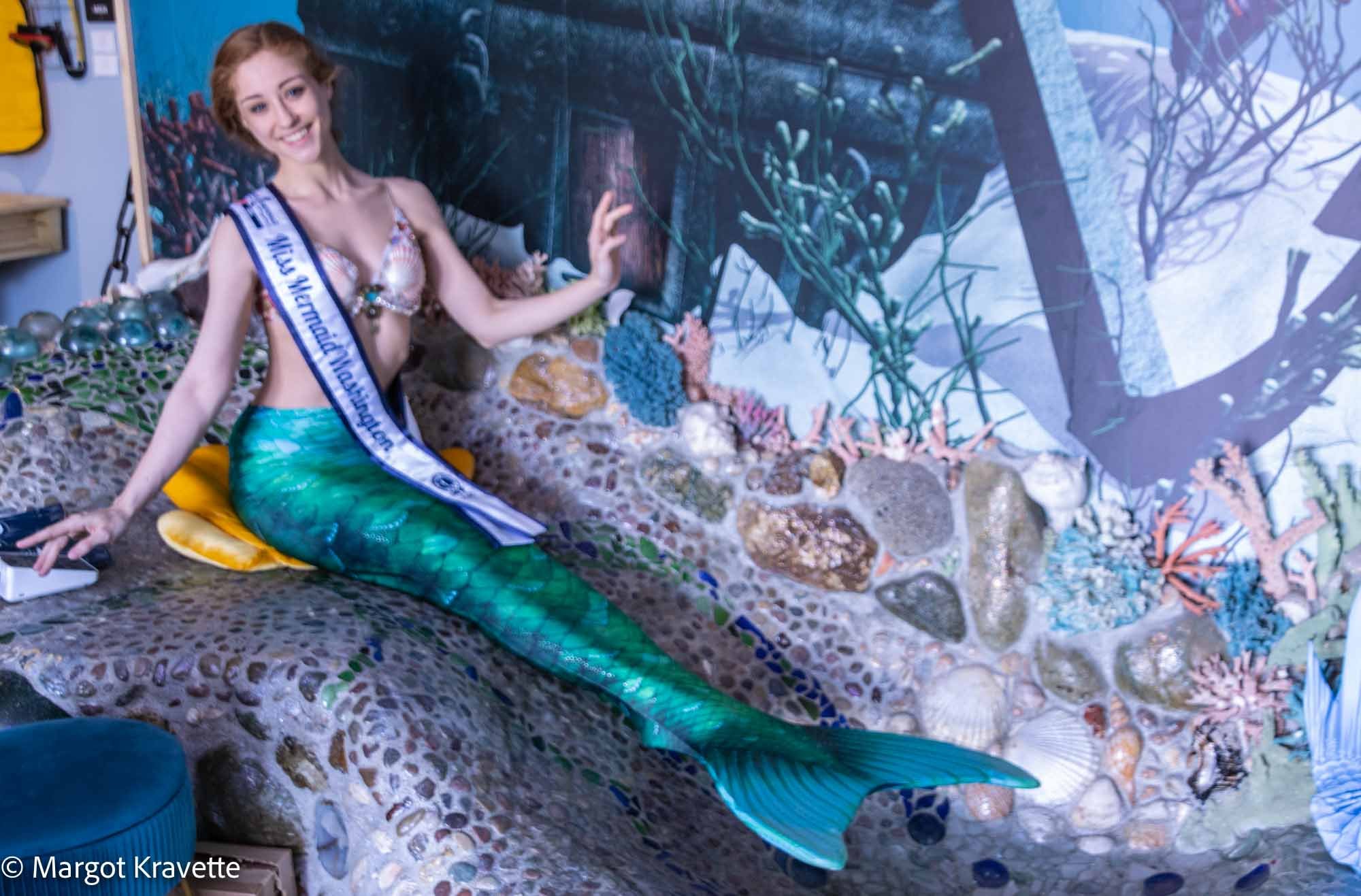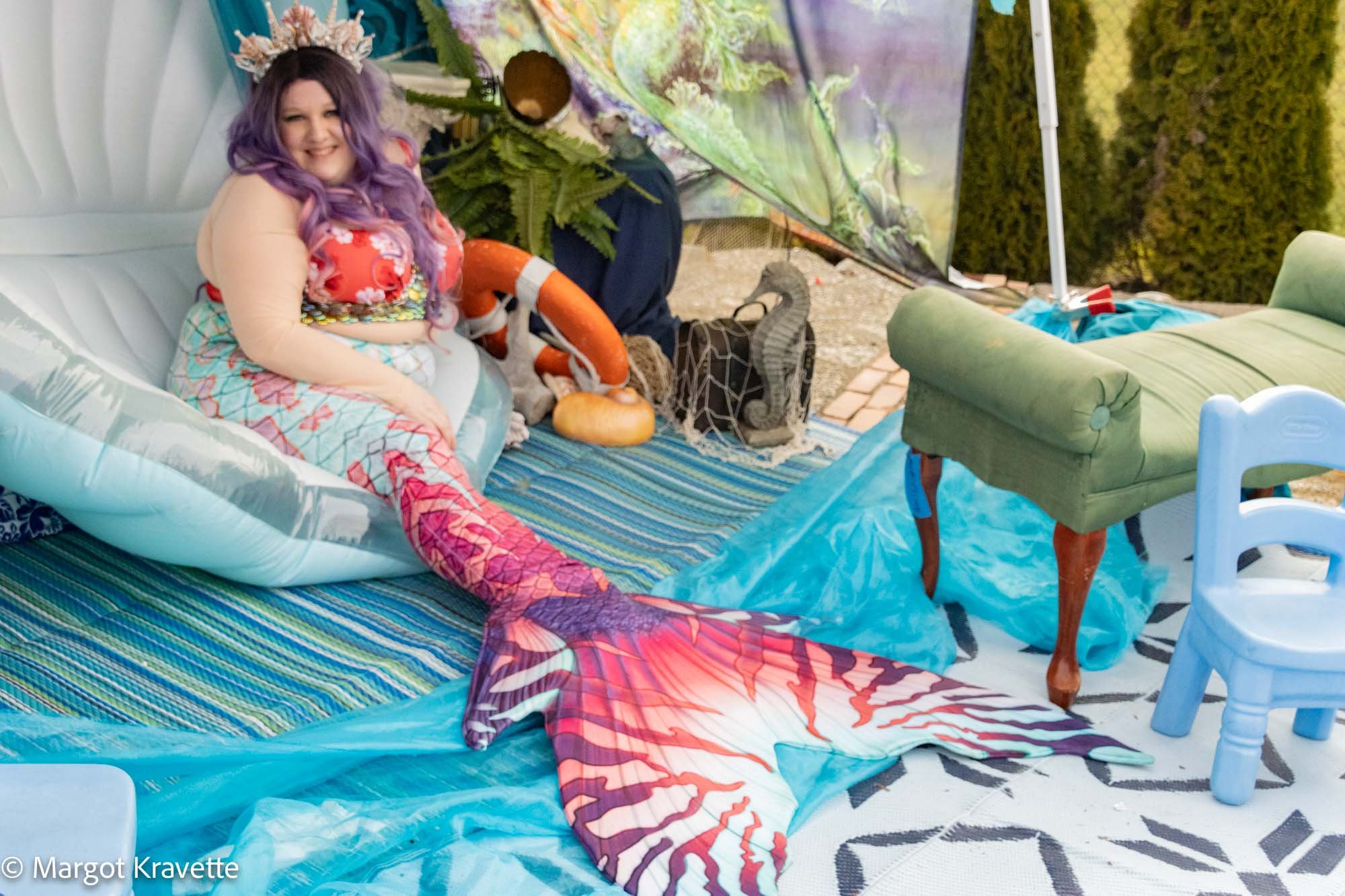International Mermaid Museum
Most of us are familiar with Disney’s movie The Little Mermaid, the animated version of Hans Christian Anderson’s folk tale of the same name, published in Copenhagen in 1837. Although they’re titled the same, the Disney version is much kinder. In Anderson’s original story, the princess loses her tongue to obtain legs which turn out to be very painful for her. She fails to undo her curse, the prince marries someone else, and Anderson’s little mermaid sacrifices herself and ends up living with the “spirits of the air”.
Mermaids have a long history. The belief in them may have arisen more than 30,000 years ago when magical female figures first appeared in cave paintings in the late Paleolithic period. 5000 years ago archeologists first found accounts of Mesopotamian mythology and the sea-god, Oannes. One of the earliest legends appeared in Syria around 1000 BC when the goddess Atargatis dove into a lake to take the form of a fish. As the gods there would not allow her to give up her great beauty, only her bottom half became a fish and she kept her human form top half. Archaeologists have found Atargatis' figure on ancient temples, statues and coins.
The Royal Museum of Greenwich’s website contains descriptions of mermaid mythology and symbolism originating in many different cultures. From Africa, Ancient Greece and Rome, Eastern Europe, and Ireland, to Southeast Asia, Scotland and Western Europe the symbols of mermaids vary from life and fertility to destruction and disaster. In folklore mermaids were often associated with misfortune and death, luring sailors off course and on to shallow rocky shores. Mer-men have had an equally fierce reputation for summoning storms, sinking ships and drowning sailors
True stories of mermaids have been offered. Going back to the 1600’s and according to The Flying Dutchman and Other Folktales from the Netherlands by Theo Meder, a mermaid had entered Holland through a dike, and was injured in the process. She was taken to a nearby lake and was soon nursed back to health. She eventually became a productive citizen, learned to speak Dutch, performed household chores, and eventually converted to Catholicism.
My curiosity about mermaids was stimulated after reading about the International Mermaid Museum and the Mermaid Festival that took place there last week. Nine miles southeast of Aberdeen, about halfway to Westport, I discovered a “resort” that included not only the museum, but also the Westport Winery with its renowned Sea Glass Grill restaurant, the Ocean Daughter’s Distillery and a beautiful 15-acre garden with over 60 sculptures by local artists commemorating each of the winery’s labels. No surprise, but unexpectantly, I spent quite a bit of time exploring and enjoying these gardens after my first of two visits to the Mermaid Museum and prior to heading to Westport where I was staying overnight.
The International Mermaid Museum is dedicated to “teaching ocean ecology from seashore to the sea floor immersed in mermaid mythology uniting world oceanic cultures”. I wasn’t really sure what that meant until I was actually there and visualized the structure of the displays. Each of the individual display groupings consist of a narrative panel describing both mermaid mythology and ocean ecology about the topic of the grouping. The groupings also included items representing the topic and, in some, a mermaid and/or a mer-man mannequin.
For example: Salmon / SEASQ
Ocean Ecology: Salmon
- There are five native Andromous species of salmon on the west coast
- Chinook or King are the largest
- Coho or Silver have shiny skin
- Chum or Dog have canine-like teeth
- Pink or Humpback develop a lump on their back when they spawn
- Sockeye or Red have crimson flesh
- Copper River Salmon is a marketing name – not a species of fish
Mermaid Mythology: SEASQ
- Ceasq (pronounced kee-ask) is a Scottish mermaid who is half woman and half salmon. The seafarer who captures one receives three wishes.
- Unfortunately, like other sea sirens, were known to lure sailors to their death.
- They were hard to kill because they placed their soul in a shell to hide it from humans. Perhaps that is why mermaids are often depicted with shells.
- When a mermaid fell in love with a sailor she would leave the sea and transform into a human. Rather than granting her husband three wishes, she would give him good luck for the rest of his life.
- There are Scottish families who say they are descendants from such families.
On my first day there the only live mermaid at the festival was Olive the Alchemist, Miss Mermaid Washington, with whom I was able to take a photo. I think she was the most famous “star” I’ve ever been photographed with. However, on Saturday, there was much more festival activity. Una the Mermaid, the founder of the Portlandia Mermaid Parade, was in her tank where she greeted children of all ages. Aura the Mermaid, performed as part of a two-person musical band called The Bad Little Mermaids, with Mike the Merman. And members of the Portland Traveling Fanta Sea Cove were relaxing in their booth, happy to have visitors take photos. There was a nearby booth where colorful and sparkling mermaid jewelry and mermaid outfits were for sale.
Interestingly, there are only two mermaid museums in the world – this one in Aberdeen, Washington and the other in Berlin, Maryland, located near the eastern shore of the Chesapeake Bay. Coincidentally, they both opened within a week of each other in 2021. Copenhagen, as Hans Christian Anderson’s home, has a sculpture of a mermaid, but no museum. I’d say if you want to see a mermaid – either go to Aberdeen or to the library – there are lots of books – especially in the children's’ section.



